Do you want to dig around in the darker recesses of the human imagination? Scare the bejesus out of your reader? Telling grisly fireside tales of what lies beyond is, after all, among the very oldest of human traditions.
To date, millions of horror stories have been told, so how are you going to make yours stand out? Well, aside from having the basic tools that every writer needs – characters, dialogue, setting and plot – to write great horror you need to really understand how it works.
So, here are the 3 things that every horror author needs to understand.
1) What IS horror fiction?
It’s the cause of a good deal of debate but, if you want to write horror fiction, chances are you have an idea of what it is already. You’re almost certainly right too: horror is a very, very broad church.
There are the archetypes of course, from the gothic classics of Stoker, Shelley and Poe to the modern bestsellers of King and Herbert, but the thread running through them is the desire to evoke fearful emotions within the reader.
The archetypes are there because they work so reliably with that universal human constant: our survival instinct, which makes us fear the unfamiliar and the unknown, and feel revulsion and dismay when faced with violence and gore. Other genres – crime novels or sci-fi adventures for example – may use such things to advance the story, but this is where horror fiction differs. For horror, the dread and revulsion are the point.
2) Horror vs. Terror
The two heavy weapons in the horror novelist’s arsenal: horror and terror. So, how do they differ?
Horror is a reaction to something happening. Something horrible, obviously. Something like the sudden appearance of an inhuman looking face, followed by a brutal murder, for example:
…the glassy eyes stared inhumanly, but it wasn’t a mask, it couldn’t be. The skin had been powdered dead-white and two hectic spots of rouge centered on the cheekbones. It wasn’t a mask. It was the face of a crazy old woman. Mary started to scream, and then the curtains parted further and a hand appeared, holding a butcher’s knife. It was the knife that, a moment later, cut off her scream.
And her head. (Robert Bloch, Psycho)
Terror, on the other hand, is the fear that something horrible is going to happen. The works of Ann Radcliffe are often considered something of a ground zero for gothic fiction, and here in The Mysteries of Udolpho, we see her using the advance of the unknown to create terror:
[Emily] perceived something enter the room, but the extreme duskiness prevented her distinguishing what it was. Almost fainting with terror, she had yet sufficient command over herself to check the shriek that was escaping from her lips…
The atmosphere continues to build as the figure approaches Emily’s bed, until she is almost able to make it out:
…terror, however, had now deprived her of the power of discrimination, as well as that of utterance.
In practice, horror and terror work hand in hand. The reality of horror enhances terror by confirming that there’s something to be scared of, just as being emotionally charged with terror means you’re already on edge when the horror is revealed.
Incidentally, while the ability to create both these emotions is essential for the horror writer, the genre title “Horror” serves as a catch-all for books dealing with either. Have a quick look at Amazon: you won’t find a “Terror” section, but there are 30,000+ titles listed under “Horror“.
The two heavy weapons in the horror novelist's arsenal: horror and terror. So, how do they differ?Click To Tweet3) Scary monsters, and what makes them scary
They may be dangerous or menacing, of course, but that’s not enough to make them true horror baddies. They must also be somehow unorthodox or abnormal. Why? Because this plays to the fear of the unknown and unfamiliar, as well as increasing the danger they present. If they’re not a conventional threat, they can’t be stopped by conventional means, so the plight of the victim seems all the more desperate.
Supernatural horror villains
The need for unorthodox danger makes the supernatural a popular realm from which to draw monstrous inspiration. What sort of hideous attack may be mounted by the antagonist? That’s limited only by the imagination. Plus, the great unknown is automatically included, and the ability to shrug off attacks or evade capture can be added as the writer sees fit.
Consider the vampire: a seemingly unstoppable creature from beyond the grave, which drains the lifeblood of its victims. The abnormality of cheating death, the obvious danger to its victims and the ability to survive typical means of attack combine in a classic horror archetype. Of course, the wild-animal fangs, the relentless need to kill and the symbolic importance of blood don’t hurt either!
If the vampire is the archetypal horror story monster, then surely Dracula is the archetypal vampire:
As we burst into the room, the Count turned his face, and the hellish look that I had heard described seemed to leap into it. His eyes flamed red with devilish passion. The great nostrils of the white aquiline nose opened wide and quivered at the edge, and the white sharp teeth, behind the full lips of the blood dripping mouth, clamped together like those of a wild beast. With a wrench, which threw his victim back upon the bed as though hurled from a height, he turned and sprang at us. (Bram Stoker, Dracula)
You can keep adding layers of complexity – such as the vampire’s anti-Christian element which attacks conventions of goodness and purity – but the idea remains the same: take common fears and exploit them, take accepted norms and subvert them.
When writing horror, take common fears and exploit them, take accepted norms and subvert them.Click To Tweet“Real world” horror villains
The supernatural may be useful, but it’s not vital. Real life can be twisted into savagery to serve the same purpose, producing out-of-the-ordinary mortal danger. Stephen King’s Cujo is a good natured family pet who,
had never wanted to kill anybody. He had been struck by something, possibly destiny, or fate, or only a degenerative nerve disease called rabies. Free will was not a factor.
To move from mad dog to mad human, we can look to King again, with Misery‘s Annie Wilkes presenting a thoroughly unhinged figure, who by turns mutilates her captive and dotes on him:
Annie was not swayed by pleas. Annie was not swayed by screams. Annie had the courage of her convictions.
As the humming, vibrating blade sank into the soft web of flesh between the soon-to-be-defunct thumb and his first finger, she assured him again in her this-hurts-Mother-more-than-it-hurts-Paulie voice that she loved him.
The insane human can be just as useful to the horror author as the supernatural creature. By using madness to remove a character’s restraint, you create the potential for some truly horrific atrocities.
Combine the two
Another undisputed giant of the genre, Mary Shelley’s Frankenstein shows us a mad scientist creating a monster from dead body parts. This ticks all the necessary horror boxes: a crazed man operating outside the fundamental laws of nature, the grotesque disfigurement of the human form, and a huge, powerful, superhuman creature.
As he gains awareness, the creature laments how it is his differences from humanity which mark him out as a monster:
I was, besides, endued with a figure hideously deformed and loathsome; I was not even of the same nature as man. I was more agile than they and could subsist upon coarser diet; I bore the extremes of heat and cold with less injury to my frame; my stature far exceeded theirs. When I looked around I saw and heard none like me. Was I, then, a monster, a blot upon the earth, from which all men fled and whom all men disowned?
The musings of the monster take us neatly back to our definition of horror: the dread and revulsion are the point. However powerful the monster may be, Frankenstein is not a tale of a demonic killing machine or an unhinged, evil mind: the horror comes from the grotesque and the unnatural.
The best horror always does.
The 3 Things Every Horror Author Must UnderstandClick To Tweet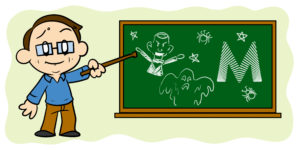
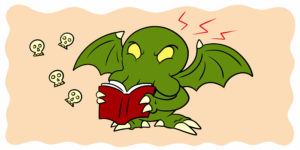
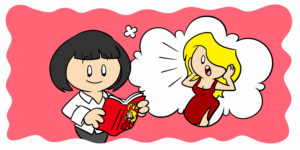
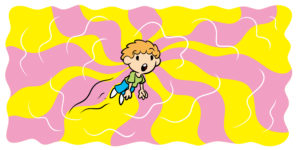
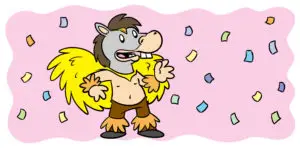
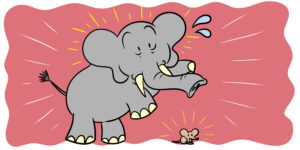
1 thought on “The 3 Things Every Horror Author Must Understand”
Illuminating, thanks!